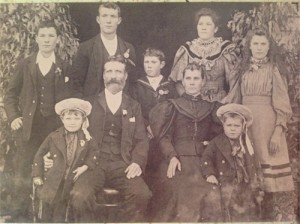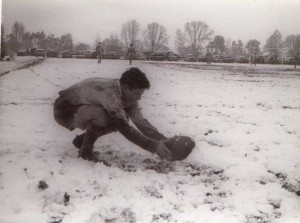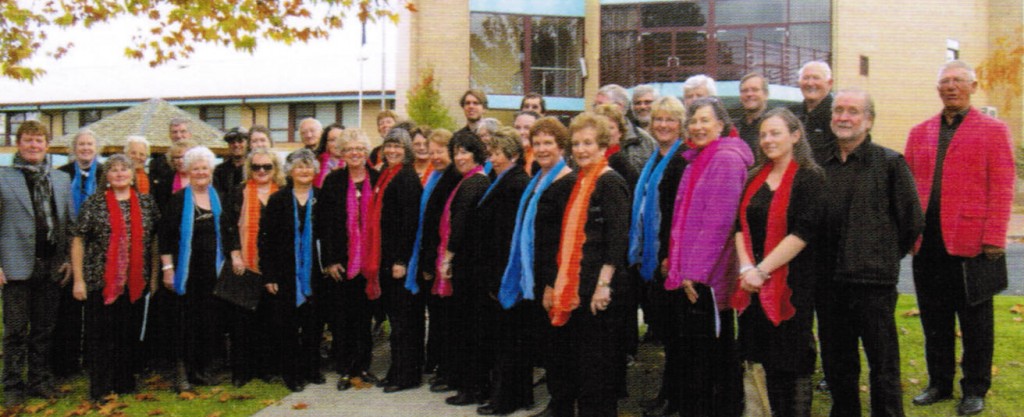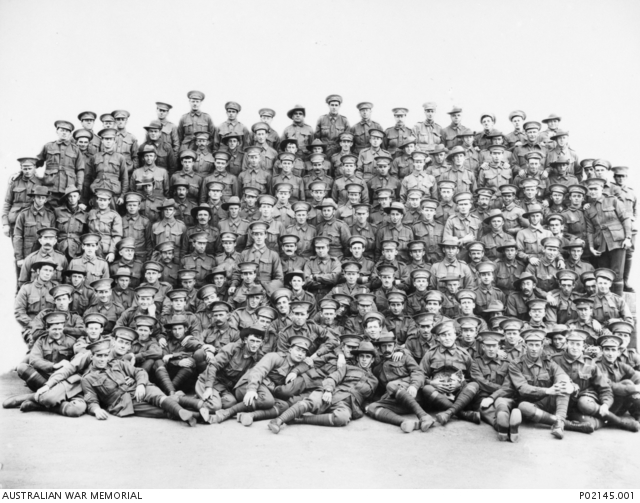After some forty-five years, interest in the Maher Cup was beginning to wane by 1965, but at Tumut on the 7th of August a deep covering of snow didn’t deter some 500 diehards from driving out to the Racecourse ground for another gruelling encounter. Continue reading
Tag Archives: Tumut
The Maher Cup Originals: Tumut and Gundagai in 1920

The family of William Daniel Patrick O’Brien about 1897. Tom O’Brien went to war and returned to captain the first Tumut Maher Cup team. Here he is with his dad’s arm around him. Younger brother Assal and Orlando (top left) both died in the War. [Source: Ancestry.com]
Below are the team lists with brief biographical information. Further down is the analysis which you can jump to here.
A Brief History of the Maher Cup Clubs in Graphs
Graphically representing the number of matches played by each club helps illustrate the highs and lows of their footballing journeys over the 52 years of the Maher Cup history, and provides the basis of a brief club history. Failure to capture the Cup meant twiddling thumbs and fretting on the outcome of the next draw.
Cootamundra (224 matches). Playing 62 games more than any other team, Coota started with a bang in 1922 winning in its first game under Phil Regan – the first paid-player coach in the bush. They didn’t let up. Regan’s 1920s blue and whites, featuring players such as Eric Weissel, Jack Kingston, Bill Lesberg and Gordon Hinton utterly dominated their opponents. With a little help they even took on England. During the Depression years, after Regan departed, it all fell apart for a while. 1935 saw the purchase of five paid players, an embarrassing loss to Tumut, and the imports instantly sacked. Coota rose to the top again in 1939 with a team composed mainly of local ex-De La Salle boys. After the war Herb Narvo (1947) and Johnny Graves (1954) led teams of extraordinary quality. Reverting to mainly local players the town continued to be consistently competitive into the 1960s. Continue reading
Gibsonvale 1946: Phil’s Truck & the Trip to Tumut
Gibsonvale was perhaps the Maher Cup’s most unlikely contender. These days, on Google Earth only ribbons of white mine scars remain. Gone are the hessian and corrugated iron huts built by battlers and fortune-hunters along the stockroute. Gone is the post office, the store, the school and the unfenced football field. Stoneham’s billiards hall and the Kikoira Pub remain, abandoned. Continue reading
10 Poems and an Obituary
The Maher Cup produced copious amount of poetry and probably just one family notice – this one published in the Tumut & Adelong Times 7 September 1923.
Herbert Howard & The Maher Cup Song
The Maher Cup inspired many stories, poems and at least one published song, The Maher Cup : March Song, written by W.H. Howard of Tumut and Junee many years ago.
The song has recently been recorded by the Choir of the Southern Cross on 10 November 2013 at the Young Town Hall. Listen to it.
Heroes On The Fringes of the Maher Cup : Brungle’s Digger Davis & Joe Nettup
Like most men his age Tom Davis enlisted for the Great War. In 1917 he fought on the Western Front, suffered from trench fever, influenza, scabies and finally was gassed just two months before the armistice. He returned home in 1919 to be classified as “medically unfit” and to be now known in his community as “Digger” Davis. Nothing unusual there.
But Tom Davis was a non-citizen. He was from the “mish”. He was in the language of the day, a darkie, an Abo.
Davis had enlisted at Cowra in January 1916 with a group of men from the Erambie reserve. Most of these eager recruits were discharged just a few months later as not being suitable due to their race. Undeterred Tom Davis went over to Goulburn in October and enlisted again. The carnage in the trenches of the Western Front had by that time changed attitudes – anyone would do, and the army promptly shipped him off to France.
Population Change in Maher Cup Country
In 1954 the Boorowa News provided the following estimates of town and district populations of the twelve “Group Nine towns”.
Cowra: town 7,000; district 15,000
Tumut: 3,500 and 13,000 (including Adelong and Batlow)
Young: 4,500 and 12,000
Cootamundra: 6,000 and 10,000 Continue reading
Cootamundra v Tumut 6 June 1923
Games That Changed The Game No. 1
This is the first in a series.
“And the rain it gently, pattered down! And the lovely green flats of the ‘Bidgiee silhoutted, as it were, against the sky line as the special train from Tumut, with footballers and supporters aboard steamed over the railway bridge yesterday afternoon. The footballers’ quest was the Maher Cup — they were going to capture it for Tumut— so they said. And their supporters were going to stir them on to deeds of derring do”.
(The Gundagai Independent, 7 June 1923).
Background
Let us step back from the poetry. It was a Wednesday afternoon – the 16th challenge for the Maher Cup was set to be played at Fisher Park Cootamundra. It was less than three years since Ted Maher put the Cup into play. Things were starting to get very serious. The rules were read scrupulously, and Rule 9 was a problem. Continue reading
Who Was Ted Maher?
On Tuesday 4 May 1920 Edward John Maher stormed into Tumut from Young with his wife Ronnie and children to take over the Wynyard Hotel. Known as E.J. or simply Ted, he was a young man going places. Within a few months he had ticked off the following – donated a Cup in his name to the local Rugby Union to be challenged for by teams up to a 150 miles distant; captained a local football team; appointed chairman of the Tumut Ramblers Football Club, refereed and ran the line, led the change from Union to League, became a member for the agricultural show and turf club committees, as well as an office bearer at the tennis club, a regular at the Tumut Rifle Club, the purchaser of the local Tattersalls licence, and player of cricket. Continue reading


